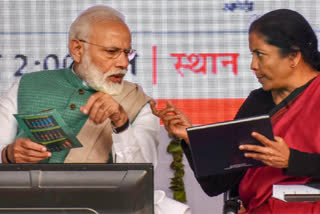New Delhi: The COVID-19 has pushed the global economy into an unprecedented emergency. As a result, the world economy that had grown at the rate of 2.9 percent in 2019 is estimated to record a growth rate of around one per cent, according to the Institute of International Finance (IIF).
India too has to face its wrath and it is evident from the revised growth projections.
For instance, Fitch solutions had cut down India’s GDP growth estimates for the coming fiscal year 2020-21 to 4.6 percent due to contraction in investment, weak private consumption amid the outbreak of deadly coronavirus.
Similarly, Moody’s too had slashed down India’s growth forecast for the calendar year 2020 to 2.5% from its earlier estimate of 5.3%.
Given the gloomy economic condition, it is reminiscent of the times of 2008 global financial crisis and there are opinions that the policies deployed during that time need to be repeated with an expansionary monetary and fiscal policy response.
However, the author had already explained in his earlier article on how the crisis in 2020 and 2008 are different from each other, despite sharing some similarities (Economic Crisis: Why 2020 is not 2008).
In this context it also demands a policy response that is different and better than earlier.
Different Policy Responses Needed
Any discourse on further policy needs to understand the impact of an overall expansion of monetary and fiscal policies on the state of the economy.
In this context, it is to be noted that during the Global Financial Crisis of 2008, there was a fall in consumption in almost all the sectors of the economy due to fall in incomes and purchasing power.
However, in 2020, the consumption demand in certain sectors is rising, given the nature of the problem and it has fallen drastically in other sectors due to complete lockdown.
